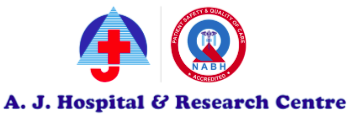
Early warning signs of Osteoporosis
Osteoporosis is often called a "silent disease" because it quietly progresses without any obvious symptoms until it leads to a bone fracture. That's why it's crucial to spot the initial signs of osteoporosis and take proactive steps to protect your bone health. By understanding these early warning signals better, you'll be more prepared to make your bone health a top priority and steer clear of the disabling consequences of this condition.
What is Osteoporosis?
Osteoporosis is a medical disorder that causes brittle, porous bones as a result of decreased bone quality and density. The bones become weaker as a result of this degradation, making them more prone to breaking even from modest trauma.
Osteoporosis often progresses silently without noticeable symptoms until a fracture occurs, most commonly in the hip, spine, or wrist. It is more prevalent in older adults, particularly women after menopause, but it can affect people of all ages.
Who is at risk?
Several factors increase a person's risk of osteoporosis. Those with a higher risk of developing osteoporosis must be recognized. Knowing these danger signs will help you determine how susceptible you are.
-
Age: As people get older, osteoporosis becomes increasingly prevalent, especially in postmenopausal women.
-
Gender: Because of hormonal changes that occur during menopause, women are more likely than males to develop osteoporosis.
-
Family History: Your risk may be increased if you have an osteoporosis family history as genetics play a role in bone density.
-
Hormonal changes: Changes in hormone levels, such as early menopause or low testosterone, can increase your risk.
-
Nutrition: Bone health may be affected by insufficient calcium and vitamin D intake.
-
Physical Activity: A sedentary way of life might cause bone loss.
-
Smoking: Smoking tobacco and excessive alcohol consumption can weaken bones and increase the risk of osteoporosis.
-
Medications: Some medications, such as long-term use of corticosteroids, can decrease bone density and increase the risk. Medical conditions like rheumatoid arthritis, celiac disease, and gastrointestinal disorders can affect the absorption of nutrients needed for healthy bones.
-
Low Calcium Intake During Adolescence: Insufficient calcium intake during the growth years, particularly during adolescence, can lead to lower peak bone mass.
-
Prior Fractures: Having a history of fractures, especially from minor trauma, can indicate weaker bones and an increased risk of future fractures.
It's important to note that while these factors can increase the risk of osteoporosis, they don't guarantee that someone will develop the condition. Lifestyle modifications, such as maintaining a healthy diet, engaging in regular exercise, and avoiding tobacco and excessive alcohol use, can help reduce the risk and promote bone health. It is advisable to discuss with a healthcare provider who can assess your individual risk factors and recommend appropriate preventive measures.
> Early Signs of Osteoporosis:
Osteoporosis typically progresses without noticeable symptoms until a fracture occurs. However, there are some early signs or indicators that might suggest you could be at risk or that your bone health is declining. These include:
-
Height loss
A steady reduction in height is a subtle early indication of osteoporosis. Vertebral fractures, or compression fractures of the spine, are to blame for this. Back discomfort is frequently present and causes a stooped or bent posture as the vertebrae deteriorate and collapse. -
Back Pain
Back discomfort that doesn't go away can be a sign of weakening bones that lead to spinal compression fractures. It's crucial to see a medical professional for an evaluation if your back pain lasts for a long time. -
Fractures from Minimal Trauma
Osteoporotic bones are brittle, and minor stress, such as slipping on a rug or lifting a small object, can cause fractures. These fractures, sometimes referred to as fragility fractures, are an important cautionary indicator. -
Changes in Posture
You might observe posture changes as osteoporosis worsens. This may manifest as a pronounced hunch in your upper back or a forward curve in your spine, often known as a dowager's hump. If you notice a significant difference in your posture, consult your healthcare provider immediately to evaluate your bone health. -
Bone Aches and Pains
It may be a sign of osteoporosis if you experience persistent aches and pains in your bones and joints, especially in the hips, wrists, and spine. Even in the absence of a clear injury or trauma, these pains can develop. -
Receding Gums and Tooth Loss
Surprisingly, osteoporosis can also be linked to oral issues like receding gums and tooth loss. Dental problems and tooth loss can be caused by weak jawbones. -
Brittle Nails and Weakened Grip Strength
Unexpected symptoms of osteoporosis include brittle nails and a loss of grip strength. Consider getting your bones checked out if you notice a loss in your grip power or nail health. -
Frequent Bone Fractures
Multiple fractures in a short period of time, especially those resulting from minor accidents or injuries, may be a sign of osteoporosis or other bone health problems.
Even though osteoporosis is a quiet illness, its early stages do leave behind small signs. In order to stop additional bone loss and fractures, it can be crucial to recognize these early warning signals and take immediate action. It's critical to speak with a healthcare provider if you or a loved one displays any of these symptoms or fits into one or more of the high-risk groups. In order to promote and safeguard your bone health, they might do bone density tests and offer advice on dietary changes, lifestyle modifications, and, if necessary, medication. Remember that early detection and treatment of osteoporosis are your best tools for preserving a robust and adaptable skeleton for many years to come.
